In the intricate world of automotive engineering, few components are as vital yet often overlooked as the distributor in ignition systems; While modern vehicles have transformed with the advent of digital and electronic technologies, the distributor’s role remains crucial in facilitating the engine’s performance. This article delves into the significance of distributors in automotive ignition systems, their functions, and the evolution they have undergone over the years.
- Understanding the Basics: What is a Distributor?
- The Distributor’s Function: Timing is Everything
- Evolution of the Distributor: From Mechanical to Electronic
- Distributor Types: Conventional vs. Electronic
- The Distributor’s Impact on Performance
- The Future of Distributors in Automotive Ignition Systems
- Integrating Smart Technology
- Fuel Efficiency and Emissions Control
- Maintenance and Longevity
- The Role of Education and Training
- The Distributor’s Influence on Ignition System Efficiency
- Challenges and Maintenance of Distributors
- The Future of Distributors and Ignition Technology
Understanding the Basics: What is a Distributor?
A distributor is a key component in the ignition system of internal combustion engines. Its primary role is to direct high-voltage electricity from the ignition coil to the appropriate cylinder’s spark plug at the right moment. This timing is essential for optimal engine performance, fuel efficiency, and emissions control.
The distributor consists of several parts, including:
- Distributor Cap: The protective cover that houses the ignition terminals.
- Rotor: A rotating arm that moves within the distributor cap to connect with the spark plug terminals.
- Ignition Coil: Generates the high voltage needed to create a spark.
- Vacuum Advance Unit: Adjusts the timing based on engine load and speed.
The Distributor’s Function: Timing is Everything
The distributor’s primary function is to ensure that the spark plugs ignite the air-fuel mixture at precisely the right time during the engine’s cycle. This timing is crucial because:
- Improper timing can lead to misfires, reduced power output, and increased emissions.
- Correct timing ensures smooth engine operation and maximizes fuel efficiency.
- Accurate timing contributes to overall engine longevity and performance.
Evolution of the Distributor: From Mechanical to Electronic
Historically, distributors were mechanical devices that relied on a series of weights and springs to adjust the timing. As automotive technology progressed, the introduction of electronic ignition systems revolutionized the role of the distributor.
Modern electronic distributors utilize sensors and microprocessors to control spark timing with greater precision. This transition has led to:
- Enhanced fuel efficiency and reduced emissions.
- Improved ignition reliability and performance under various driving conditions.
- Elimination of many mechanical components, resulting in lower maintenance needs.
Distributor Types: Conventional vs. Electronic
There are primarily two types of distributors used in automotive ignition systems:
- Conventional Distributors: These use mechanical components and are often found in older vehicles. They require regular maintenance and can be prone to wear and tear.
- Electronic Distributors: These are more common in modern vehicles and utilize solid-state electronics to manage ignition timing. They offer better performance and reliability.
The Distributor’s Impact on Performance
The distributor plays a critical role in the overall performance of an engine. A well-functioning distributor ensures:
- Smooth acceleration and responsiveness.
- Optimized fuel combustion for better fuel economy.
- Reduced emissions, contributing to environmental sustainability.
Whether mechanical or electronic, the distributor remains an essential component that bridges the gap between electrical energy and mechanical power, ensuring that your vehicle runs smoothly and efficiently.
The Future of Distributors in Automotive Ignition Systems
As the automotive industry advances, the future of distributors in ignition systems is poised for transformation. With the rise of electric vehicles (EVs) and hybrid technologies, traditional ignition systems that utilize distributors are becoming less common. However, the principles behind distributors can still inform innovations in ignition management for these new platforms.
Integrating Smart Technology
The integration of smart technology into automotive systems is a game changer. Future ignition systems may use advanced algorithms and artificial intelligence to determine the optimal timing for spark delivery, adapting in real-time to various driving conditions. This shift could lead to the development of a “smart distributor,” capable of learning from the vehicle’s performance and making adjustments autonomously.
Fuel Efficiency and Emissions Control
As environmental concerns take center stage, the role of the distributor will continue to evolve. With stricter regulations on emissions, automotive engineers will focus on enhancing combustion efficiency. Advanced distributors could play a crucial role in managing ignition timing for alternative fuels, such as hydrogen or biofuels, ensuring that engines operate within optimal ranges for emissions reduction.
Maintenance and Longevity
The future will also see advancements in materials and design that enhance the durability and lifespan of distributors. With the integration of smart diagnostic systems, vehicles may be able to predict when a distributor needs maintenance or replacement, reducing downtime and enhancing reliability. This proactive approach could save car owners both time and money while ensuring optimal performance.
The Role of Education and Training
As the technology behind automotive ignition systems evolves, so too must the knowledge and skills of mechanics and technicians. Educational programs will need to adapt, providing training on the latest advancements in distributor technology and ignition management systems. This ensures that the workforce is equipped to handle both traditional and cutting-edge technologies.
The distributor has played a pivotal role in the development of automotive ignition systems for over a century. While its traditional form may be diminishing in the face of electric and hybrid technology, the principles of timing, efficiency, and performance will remain central to automotive engineering.
As new technologies emerge, the legacy of the distributor will continue to influence the design and functionality of ignition systems. Embracing these changes will be essential for manufacturers and consumers alike, as the industry moves towards a more sustainable and technologically advanced future.
In this pivotal moment, understanding the role of the distributor not only honors its historical significance but also prepares us for the innovations that lie ahead. The journey of the distributor reflects the broader narrative of the automotive world: one of constant evolution, where each component plays a vital part in the symphony of performance and efficiency.
The Distributor’s Influence on Ignition System Efficiency
The efficiency of an ignition system is critical for optimal engine performance, and the distributor plays a significant role in this aspect. A precise ignition timing, regulated by the distributor, ensures that the air-fuel mixture within the engine combusts at the right moment. This timing affects everything from acceleration to fuel economy.
One of the most significant advantages of modern electronic distributors is their ability to adapt rapidly to changing engine conditions. For instance, when a driver accelerates, the ignition system must adjust to provide the correct spark timing to prevent knocking and ensure smooth power delivery. This adaptability not only enhances performance but also contributes to better fuel efficiency, allowing drivers to get more out of every drop of fuel. With advancements in technology, some distributors now integrate with the vehicle’s onboard diagnostics, providing real-time feedback to optimize performance further.
Challenges and Maintenance of Distributors
Despite their importance, distributors can be prone to various issues that may hinder their performance. Common problems include:
- Wear and Tear: Mechanical components can wear down over time, leading to misfires and inconsistent timing.
- Corrosion: The ignition system is exposed to heat and moisture, which can corrode electrical connections, resulting in poor conductivity.
- Incorrect Timing Settings: If a distributor is not calibrated correctly, it can lead to severe engine performance issues.
Regular maintenance is vital to ensure the distributor operates efficiently. Checking the distributor cap and rotor for wear, ensuring proper electrical connections, and recalibrating the timing as needed are essential steps in maintaining an effective ignition system. Mechanics often recommend replacing the distributor every 30,000 to 50,000 miles, depending on vehicle type and usage conditions.
The Future of Distributors and Ignition Technology
As we look to the future, the evolution of ignition technology suggests a gradual decline in the traditional distributor’s role, particularly with the rise of distributor-less ignition systems (DIS) and coil-on-plug (COP) systems. These methods eliminate the need for a distributor by using multiple ignition coils to deliver sparks directly to each cylinder, enhancing efficiency and reliability.
However, the knowledge and understanding of traditional distributor systems will remain crucial for those working on older vehicles or specialized applications. Enthusiasts and professionals alike must adapt to this shift in technology while preserving the core principles of ignition management.
The distributor may be on the path to becoming a relic of the past as automotive technology advances, but its impact on the development of ignition systems cannot be overstated. From its mechanical origins to its electronic transformations, the distributor has played a vital role in ensuring engines run smoothly and efficiently. As we embrace new technologies, it’s essential to remember the foundational elements that have brought us to this point.
In a world increasingly focused on sustainability and performance, understanding the intricacies of ignition systems—including the distributor—will remain relevant. Whether you’re a mechanic, a car enthusiast, or simply a curious driver, appreciating the complexity and evolution of these systems can enhance your connection to the engine that powers your vehicle. The distributor’s legacy will continue to influence future innovations, reminding us of the intricate dance between technology and engineering that drives the automotive industry forward.

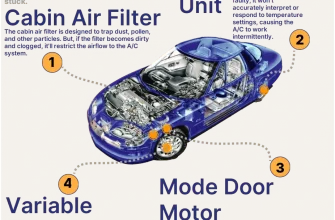
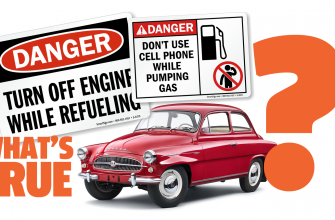
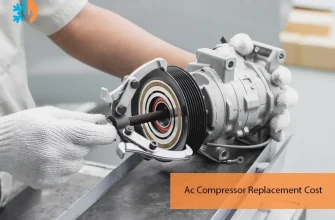


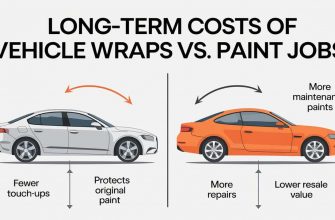
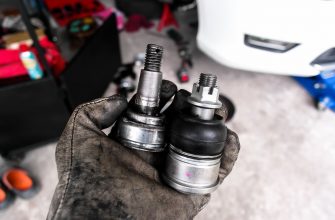

This article expertly explains the distributor
The evolution from mechanical to electronic distributors is truly intriguing. This article does a fantastic job explaining it all!
I loved this deep dive into automotive ignition systems. It
I never realized how critical the distributor
Very informative read! The breakdown of each component within the distributor made complex concepts easy to understand.
This article provides an excellent overview of the often-overlooked distributor in ignition systems. I learned so much about its vital role in engine performance!
I appreciate how detailed this article is regarding the components of a distributor. It
A well-written piece that highlights the importance of timing in ignition systems. The explanations are clear and informative. Great job!